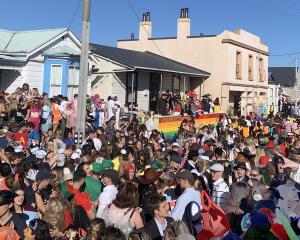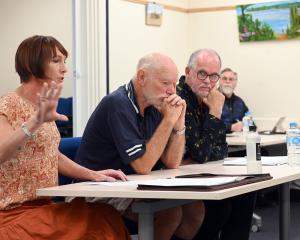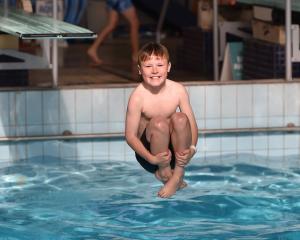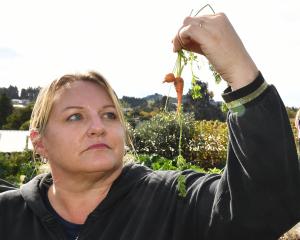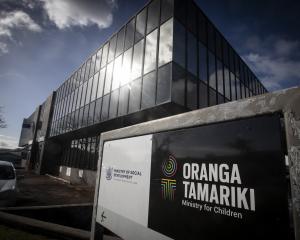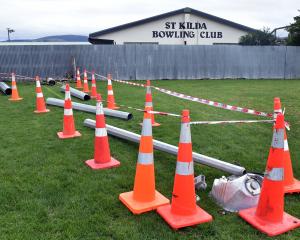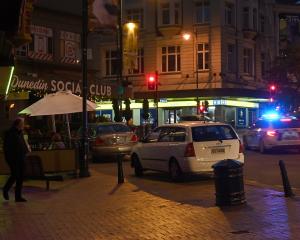At least 11 separate points of ''forceful contact'' to the head were identified during the postmortem conducted on Justin Conrad McFarlane's body, the jury in a murder trial in the High Court at Dunedin has been told.
The four men charged with murdering Mr McFarlane (35) in his Pine Hill Rd farmhouse in Elderslie, North Otago, in September last year, are Robert James Cummings (23), of Oamaru, Steven Kenneth Boskell (19), of Palmerston, Ryan Warren Geary-Smart (24), of Oamaru, and his brother, Jacob Christopher Geary-Smart (23), also of Oamaru.
Stephanie Rose McCormack (27) is charged with being an accessory after the fact of murder.
The trial, in its third week, continued yesterday before Justice David Gendall.
Forensic pathologist Dr Martin Sage, of Christchurch, who conducted the postmortem, in Christchurch, gave evidence about the nature of the injuries.
Because of a lack of patterning left on the body by the assault, it was not possible to establish the weapon used for many of the injuries.
Mr McFarlane's death from subdural haemorrhage and subarachnoid haemorrhage was caused by the cumulative effect of many blunt-force injuries, rather than a single blow, Dr Sage told Crown prosecutor Andrew McRae.
There were multiple blunt-force injuries to his head and face, and many less serious injuries to other parts of the body. There was no skull fracture.
Some of the head and face injuries suggested use of a weapon, or contact with a sharp surface, and others appeared to have been caused by punches and kicks.
He also had a fractured nose, eye socket, and cheekbone; black eyes, and a shoe print indentation on the crown of his head.
The shoe print mark on the head did not necessarily indicate a serious injury.
This was because of the nature of head injuries, which involved the movement of the brain in the head, more than the force exerted to the outside of the head.
It was possible a kick that left no mark was more damaging.
There was no evidence to indicate the electrical cords found around Mr McFarlane's body were used to restrain him.
While it was possible one was used for strangulation of the neck, there was no sign of this.
Under cross-examination by Cummings' lawyer, Anne Stevens, Dr Sage said while the combination of subdural haemorrhage and subarachnoid haemorrhage was the likely cause of death, each on their own could have been enough to cause death.
Under cross-examination by Ms Stevens, Trevor Shiels (representing Boskell), and David More (representing Ryan Geary-Smart), Dr Sage was asked about the injuries likely to result from the use of various weapons, including a fire implement, an empty beer bottle, and a golf club.
The jury also was also given evidence from three police officers who visited McCormack's home in Ardgowan Rd, Oamaru, on September 11, the day Mr McFarlane's body was found.
The purpose of the visit was to ask Ryan Geary-Smart about a car chase in the Maheno area between 3am and 4am that had been abandoned, not long before the body was discovered at Elderslie.
Police believed the vehicle involved in the chase was Ryan Geary-Smart's Nissan Skyline.
Constable Nayland Smith, of Omarama, said he spoke to Ryan Geary-Smart and McCormack.
Both said they were home by 1am, after a cruise around Oamaru's streets.
They declined to give a statement. He served Ryan Geary-Smart with a request to name the driver of the vehicle within 14 days, and impounded the vehicle, which was towed that day.
Cross-examining Const Smith, Mr More suggested the real reason the vehicle was seized was because of the homicide investigation, and not the stated reason of the police pursuit.
Const Smith said the vehicle was impounded as a consequence of the suspicion it was involved in the pursuit.
Const Smith confirmed he had been briefed on the homicide, and knew Ryan Geary-Smart was one of several early suspects in that investigation.
The trial continues today.




